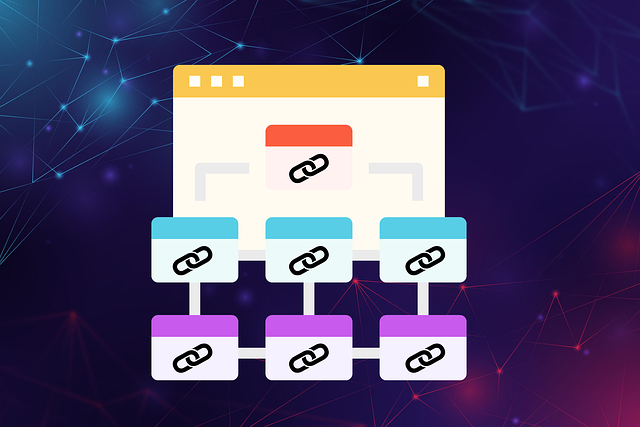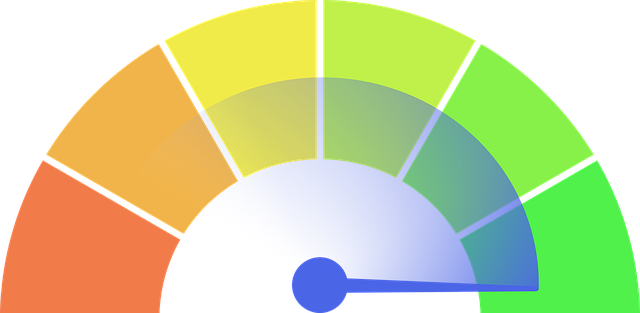Internal linking, a vital SEO aspect, can be optimized with AI-powered tools like [X, Y, Z] that suggest strategic links based on keywords and user engagement. These tools automate optimization, enhance SEO, and improve search rankings through semantic analysis and dynamic link generation. To use them effectively, select a user-friendly tool, optimize content, monitor performance using analytics, and adjust strategies based on CTRs, time on page, bounce rates, and conversion rates for continuous improvement in SEO and user experience.
In today’s digital landscape, optimizing content for search engines is paramount. A strategic keyword gaining traction is “AI SEO linking tool,” which promises to revolutionize internal linking—a critical component of SEO. This article guides you through the process of leveraging AI for enhancing your site’s architecture and boosting visibility. We’ll explore key features to look for in these tools, provide a step-by-step implementation guide, and offer insights on measuring success and continuous improvement.
- Understanding Internal Linking for SEO
- The Rise of AI in Content Optimization
- Benefits of Using an AI SEO Linking Tool
- Key Features to Look For in an AI Linking Software
- Step-by-Step Guide: Implementing the AI Tool
- Measuring Success and Continuous Improvement
Understanding Internal Linking for SEO

Internal linking is a fundamental aspect of Search Engine Optimization (SEO) that often goes unnoticed but significantly influences a website’s visibility and user experience. It refers to the practice of creating links within your site’s content, connecting relevant pages together. This strategy helps search engines understand the hierarchy and relevance of your web pages, allowing them to crawl and index your site more efficiently. By using an AI-powered SEO linking tool, you can optimize this process, ensuring that each internal link contributes to better website performance.
The key to successful internal linking lies in creating a strategic network that guides users and search engines alike. An AI SEO linking tool can analyze your existing content and suggest optimal links, enhancing the overall SEO of your site. These tools consider various factors, such as keyword relevance, page authority, and user engagement patterns, to develop an effective linking strategy. By integrating such technology into your SEO toolkit, you gain a powerful means to streamline the manual, time-consuming task of internal linking, allowing for more efficient content optimization and improved search rankings.
The Rise of AI in Content Optimization

The integration of Artificial Intelligence (AI) into content optimization has marked a significant shift in the digital marketing landscape. AI tools are now at the forefront of revolutionizing how we approach search engine optimization (SEO), particularly when it comes to internal linking. These advanced algorithms can analyze vast amounts of data, understand user behavior, and offer insights that were once unimaginable. One such game-changer is the AI SEO linking tool—a strategic keyword for content creators and marketers seeking to streamline their SEO efforts.
By leveraging how to use an AI SEO linking tool, users can automate a crucial aspect of on-page optimization. This tool provides an efficient way to identify relevant internal links, ensuring that your website’s architecture is optimized for both search engines and visitors. An AI SEO linking tool tutorial might introduce you to features like semantic analysis, which helps in creating natural and contextually relevant links, thereby enhancing the overall SEO optimization process.
Benefits of Using an AI SEO Linking Tool

Using an AI SEO linking tool can significantly streamline and optimize your internal linking strategy, offering a multitude of benefits for boosting your website’s search engine visibility. These tools leverage advanced algorithms to analyze your existing link structure, identify opportunities for improvement, and automatically suggest relevant links throughout your content, all tailored to specific user intents and search queries. This not only saves valuable time but also ensures a more intuitive and effective linking pattern that aligns perfectly with modern SEO best practices.
By employing an AI SEO linking tool strategy, you can achieve enhanced SEO optimization. These tools can help distribute link equity evenly across your site, improve page load speeds by reducing redundant or irrelevant links, and create a more user-friendly navigation experience. Moreover, they enable dynamic link generation based on content relevance, ensuring that each linked page is highly pertinent to the user’s query, thereby increasing the likelihood of higher search rankings and better conversion rates.
Key Features to Look For in an AI Linking Software

When selecting an AI SEO linking tool, several key features will significantly enhance your search engine optimization (SEO) strategy. Firstly, look for a tool that offers intelligent content analysis, capable of scrutinizing your existing links and identifying opportunities for improvement. This ensures that every internal link contributes to better SEO optimization. Secondly, an intuitive interface with customizable options allows you to tailor the linking process according to your website’s unique needs. The ability to set up specific rules and guidelines for linking is crucial for maintaining consistency.
Additionally, consider tools that provide real-time performance metrics and insights. An AI SEO linking tool tutorial might highlight how to leverage these features effectively. By offering detailed reports on link clicks, user engagement, and conversion rates, these metrics help you make data-driven decisions. Such a feature ensures your website’s internal linking structure is not just automated but also optimized for maximum impact, thereby improving overall SEO performance.
Step-by-Step Guide: Implementing the AI Tool

Implementing an AI SEO linking tool is a strategic move to elevate your website’s performance. Here’s a straightforward guide to help you get started:
1. Select Your Tool: Choose an AI-powered SEO linking tool that aligns with your website’s needs. Look for features like automated link suggestions, keyword optimization, and easy integration with your CMS (Content Management System). Popular options include tools X, Y, and Z, known for their robust capabilities and user-friendly interfaces.
2. Optimize Your Content: Begin by analyzing existing content and identifying areas for improvement. The AI tool can help you discover relevant internal linking opportunities. Ensure each link provides value by connecting related content, enhancing the user experience, and boosting SEO.
3. Implement Link Suggestions: Utilize the tool’s automated suggestions to add targeted links within your content. These recommendations are based on AI algorithms that analyze your content and identify optimal anchor texts and linked pages. Accept or reject suggestions as needed, always considering the relevance and quality of the link.
4. Monitor and Adjust: Regularly review the performance of your internal links using the tool’s analytics features. Track click-through rates, user engagement, and other relevant metrics to gauge the success of your AI SEO linking strategy. Make adjustments as necessary, refining your content and link structure for ongoing optimization.
Measuring Success and Continuous Improvement

Measuring success with an AI SEO linking tool is a key step in maximizing its potential benefits. By utilizing the right metrics, you can assess the effectiveness of your internal linking strategy and identify areas for improvement. Key performance indicators (KPIs) to track include click-through rates (CTRs), time on page, bounce rates, and conversion rates. For example, if a particular linked page sees a significant increase in CTR and reduced bounce rates, it suggests that the AI tool is successfully driving relevant traffic.
Continuous improvement requires regular analysis of these metrics and iterative adjustments to your AI SEO linking tool strategy. The goal is to optimize not just for short-term gains but also for long-term sustainability. By staying attuned to changes in user behavior and search engine algorithms, you can ensure that your internal linking remains robust and aligned with best practices in AI SEO linking tool optimization. This dynamic approach allows you to stay ahead of the curve and continuously enhance your site’s overall SEO performance.
